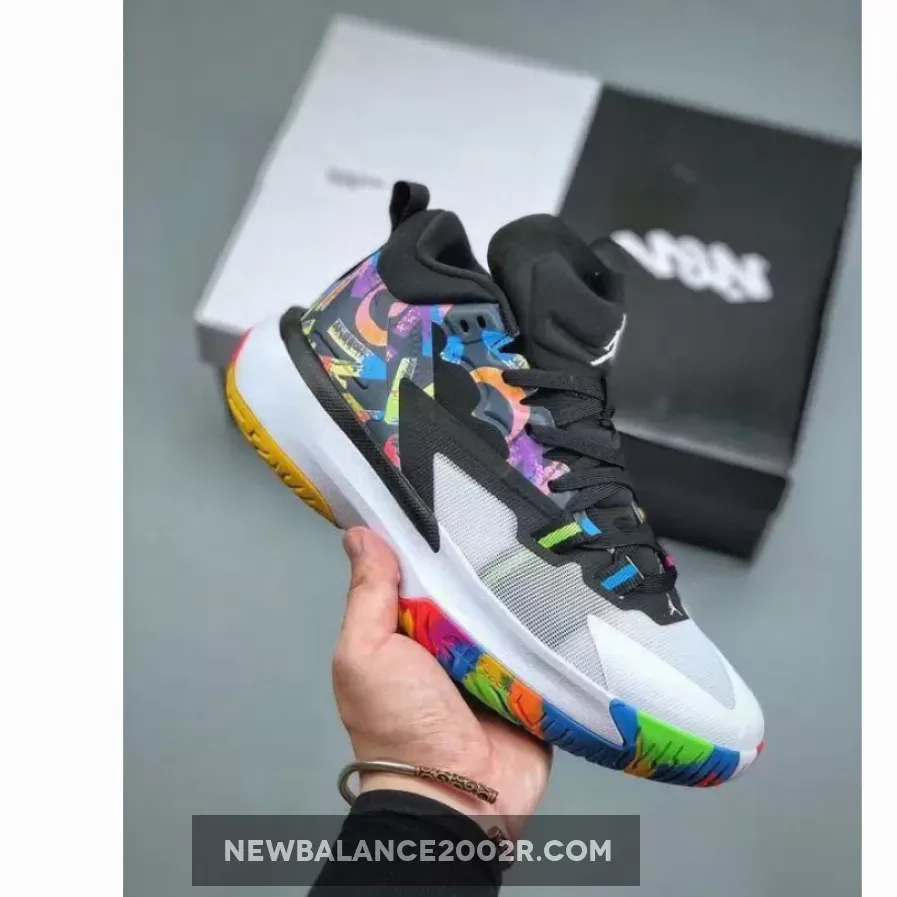Zion Williamson. The name itself conjures images of explosive power, breathtaking athleticism, and an undeniable force on the basketball court. His on-court dominance has translated into a highly anticipated signature shoe line with Jordan Brand, a partnership that has yielded impressive results, particularly with the initial release – the Jordan Zion 1. But the success of the Zion 1 naturally begs the question: Can this momentum be sustained, can the line evolve, and most importantly, can future iterations match, or even surpass, the impact of its predecessor? The release of the Jordan Zion 2 already suggests a strong intention to continue the legacy, but the true test lies in how effectively this and subsequent models address the challenges and opportunities presented by the evolving demands of high-performance basketball footwear.
The Jordan Zion 1, despite its initial success, faced some critiques. While lauded for its innovative cushioning and support systems designed to handle Williamson’s immense power, some found the shoe bulky or overly heavy. Others expressed desires for more colorway options or a wider range of styles to cater to different preferences beyond the initial releases. The Zion 1 lows, and the Zion dunks low variations, attempted to address some of these concerns by offering a sleeker profile and a more versatile aesthetic. However, the core question remains: Can the Zion line consistently innovate and adapt to meet the diverse needs of both elite athletes and casual consumers?
The answer, at least for the immediate future, appears to be a resounding “yes.” The Jordan Zion 2, launched in June 2022, provides a compelling argument for the continued success of the line. Priced competitively at $120 for adult sizes, the Zion 2 builds upon the foundation laid by its predecessor while incorporating significant improvements. The focus on supporting even the most powerful players remains, but the technology has been refined. The inclusion of a Nike Air-Sole unit provides lightweight cushioning, ensuring that the shoe doesn’t sacrifice agility for protection. Simultaneously, the strategically placed Zoom Air units under the forefoot enhance responsiveness and provide that crucial springy support crucial for explosive movements and powerful dunks – Williamson’s signature move.
The success of the Zion 2, however, shouldn’t solely be judged by its technical specifications. Market response and consumer feedback play a critical role in shaping the long-term trajectory of the line. The availability of a wider range of colorways and styles in the Zion 2, compared to its predecessor, already demonstrates Jordan Brand’s commitment to engaging a broader audience. This approach allows the brand to tap into different stylistic preferences and reach beyond the dedicated Williamson fan base, expanding the potential market for the entire Zion line. The “Jordan Zion 1 black and white” colorway, for instance, showcases the brand’s ability to offer a classic, versatile design that appeals to a wider range of consumers, demonstrating an understanding of the market’s diverse tastes.
Furthermore, the success of the Zion line is intertwined with the continued success of Zion Williamson himself. His performance on the court directly influences the perception and desirability of his signature shoes. Any injuries or prolonged periods of inactivity could potentially impact sales and the overall appeal of the brand. Therefore, maintaining Williamson’s health and performance remains crucial for sustaining the momentum generated by the Zion 1 and further solidifying the success of the Zion 2 and any subsequent models.
Beyond the purely athletic considerations, the Jordan Zion line also benefits from the broader context of the basketball shoe market. This competitive landscape demands constant innovation and adaptation. To ensure lasting success, future Zion models must not only maintain their superior cushioning and support but also incorporate emerging technologies, sustainable materials, and compelling design elements that differentiate them from competitors. This requires a forward-thinking approach, a commitment to research and development, and a constant evaluation of consumer feedback.
The comparison between the Zion 1 and Noah’s involvement, frequently searched as “Zion 1 Noah’s,” “Zion Noah,” and “Noah and Jordan,” highlights the brand’s effort to establish a strong narrative and connection. While the details of this specific connection are less relevant to the core technical aspects of the shoes, it exemplifies the brand’s efforts to cultivate a broader narrative around the product, extending beyond mere performance specifications.
In conclusion, the success of the Jordan Zion 2 represents a significant step toward building a lasting signature shoe line. While the Jordan Zion 1 set a strong foundation, the Zion 2 has shown a clear intent to refine and improve upon its predecessor. But the long-term success hinges on several factors: the continuous innovation of shoe technology, the responsiveness to consumer preferences, the strategic marketing and branding efforts, and most importantly, the continued health and performance of Zion Williamson himself. The question isn’t simply “Will there be a Zion 2?” – it’s whether the Zion line can evolve, adapt, and maintain its competitive edge in the ever-evolving landscape of high-performance basketball footwear. The early indications are positive, but the true testament will come in the years to come as the line expands and faces new challenges in the competitive basketball shoe market.
 Buy From: Jordan Zion 1 ‘Noah’ Black/Bright Crimson-Amarillo-White / jordan zion 1 noah release date
Buy From: Jordan Zion 1 ‘Noah’ Black/Bright Crimson-Amarillo-White / jordan zion 1 noah release date
